Tk and thus Tkinter only provide base widgets; reusable combinations of them are beyond their scope. The abandoned Tix package offered a mechanism for and a collection of these, called "mega-widgets", but the idea didn't catch on apparently.
I did it my way the following way (using the Model-View-Presenter design pattern).
It looks like this:

import tkinter
from tkinter import ttk
from tkinter import W, E
class View_EditableList(object):
def __init__(self,root,root_row):
""" List with buttons to edit its contents.
:param root: parent widget
:param roow_row: row in `root'. The section takes 2 rows.
"""
self.list = tkinter.Listbox(root, selectmode=tkinter.EXTENDED)
self.list.grid(row=root_row, sticky=(W, E))
root.rowconfigure(root_row, weight=1)
self.frame = ttk.Frame(root)
self.frame.grid(row=root_row+1, sticky=(W, E))
self.add = ttk.Button(self.frame, text="+", width=5)
self.add.grid(row=0, column=1)
self.edit = ttk.Button(self.frame, text="*", width=5)
self.edit.grid(row=0, column=2)
self.del_ = ttk.Button(self.frame, text="-", width=5)
self.del_.grid(row=0, column=3)
self.up = ttk.Button(self.frame, text=u"↑", width=5)
self.up.grid(row=0, column=4)
self.down = ttk.Button(self.frame, text=u"↓", width=5)
self.down.grid(row=0, column=5)
self.frame.grid_columnconfigure(0, weight=1)
self.frame.grid_columnconfigure(6, weight=1)
class Presenter_EditableList(object):
def __init__(self,view,root):
"""
:param view: View_EditableList
:param root: root widget to be used as parent for modal windows
"""
self.root = root
self.view = view
view.add.configure(command=self.add)
view.edit.configure(command=self.edit)
view.del_.configure(command=self.del_)
view.up.configure(command=self.up)
view.down.configure(command=self.down)
def add(self):
w=View_AskText(self.root)
self.root.wait_window(w.top)
if w.value:
self.view.list.insert(self.view.list.size(),w.value)
def edit(self):
l=self.view.list
try:
[index]=l.curselection()
except ValueError:
return
w=View_AskText(self.root,l.get(index))
self.root.wait_window(w.top)
if w.value:
l.delete(index)
l.insert(index,w.value)
def del_(self):
l=self.view.list
try:
[index]=l.curselection()
except ValueError:
return
l.delete(index)
l.select_set(max(index,l.size()-1))
def up(self):
l = self.view.list
try:
[index] = l.curselection()
except ValueError:
return
if index>0:
v = l.get(index)
l.delete(index)
l.insert(index-1,v)
l.select_set(index-1)
def down(self):
l = self.view.list
try:
[index] = l.curselection()
except ValueError:
return
if index<l.size()-1:
v = l.get(index)
l.delete(index)
l.insert(index+1,v)
l.select_set(index+1)
def getlist(self):
return [self.view.list.get(i) for i in range(self.view.list.size())]
def setlist(self,list_):
self.view.list.delete(0,tkinter.END)
for i,v in enumerate(list_):
self.view.list.insert(i,v)
# supplemental class; it's in another file in my actual code
class View_AskText(object):
"""
A simple dialog that asks for a text value.
"""
def __init__(self, master, value=u""):
self.value = None
top = self.top = tkinter.Toplevel(master)
top.grab_set()
self.l = ttk.Label(top, text=u"Value:")
self.l.pack()
self.e = ttk.Entry(top)
self.e.pack()
self.b = ttk.Button(top, text='Ok', command=self.save)
self.b.pack()
if value: self.e.insert(0, value)
self.e.focus_set()
top.bind('<Return>', self.save)
def save(self, *_):
self.value = self.e.get()
self.top.destroy()
root = tkinter.Tk()
view = View_EditableList(root, 5)
Presenter_EditableList(view, root)
root.mainloop()
